Physical fitness can be defined as “the capability of the heart, blood vessels, lungs and muscles to function at optimal efficiency.” Fitness is a much broader concept that also embraces a person’s psychological wellbeing and mental attitude. Persons can have mental, psychological, and emotional as well as the physical fitness.
TYPES OF EXERCISE
Exercise will improve fitness, but the question is: What type of exercise? Different types of exercise will improve your fitness in different ways. Some exercises will make you strong, others improve your endurance and others your flexibility and so on. Even an exercise which is used to improve your strength, doesn't improve your strength in all parts of the body. One strength exercise might be predominantly for your arms whereas another is predominantly for your legs.
Exercises are grouped in many ways. One is according to which of the basic components of fitness the exercise helps (refer back to lesson 1).
Another way of grouping exercises is as follows:
- Arm Exercises e.g. Throwing a discus
- Leg Exercises e.g. Running
- Trunk (or Body) Exercises e.g. Surfing.
Obviously there are shades of grey between these various types of exercise. Chin ups for instance would be mainly an arm exercise, but to some extent also beneficial to the trunk.
Developing Physique
This simply means improving body shape. Usually one of two things is involved:
- Toning or forming up muscles
- Losing excess weight.
Diet as well as exercise is important to both these things. Diet alone will never keep the muscles firm or the weight in the right places though. For example, women can benefit from jogging and walking programs combined with basic conditioning exercises (stretching exercises, balanced weights resistance program, etc.) to obtain fat losses to thighs, hips, waist and arms). The best approach to losing weight is to combine such activity with a balanced diet.
Basic Exercises for Physique
The following exercises are ideal for general toning up of muscles:
- Abdominal crunches for the abdominal muscles
- Squats and lunges for the legs and buttocks
- Push ups for the arms and upper torso
- Chest press for the arms and upper torso
- Shoulder press for the arms and upper torso
- Bicep curls for the upper arms
- Swimming for overall toning
- Free weight aerobic classes for both toning and cardio workout
A Balanced Program
Too much of one type of exercise and little of another can cause an unbalanced development of the physique. You should always ensure you are getting a balanced program of exercise. All arm exercise will produce big arm muscles on a body with small leg and trunk muscles. Regular review of programs can help to ensure a persons physique is not developing disproportionately.
Resistance Training
Lifting weights both develops strength and tones the muscles of the arms and the chest. Some weight training exercises are designed to put stress on the leg muscles. Doing these will help tone the leg muscles. There are many types of weight training exercises, which provide an all round strength and muscle toning benefit. Options include free weights (dumbbells, bars etc) or machine weights. Machine weights are ideal for beginners as they can limit range of motion during the performance of the exercise, good when a person may not yet have great technique. The equipment should also have mechanisms to help protect a person from injury, if they perform the exercise according to specified guidelines.
As a general rule:
- Toning – lighter weight, more reps
- Muscle building and strength – heavier weight, fewer reps
 Cardiorespiratory (Aerobic) Endurance
Cardiorespiratory (Aerobic) Endurance
The most popular exercise for this purpose is jogging or walking. It is generally a good idea to vary the cardiovascular activity, to provide variety, and to make the most of secondary muscle toning effects. In the gym for example, you can make use of treadmills, cyclers, orbital cyclers, rowing machines, stepping machines, different aerobic classes and so on. Rowing for example, will build upper body and arm muscle tone, but would not be appropriate for someone with a shoulder or back injury, while a cycler will tone the legs. Outside the gym you could alternate walking, jogging, hiking, indoor rock climbing, swimming, playing a team sport or even having clients play sport/games with their children, or pets.
Any activity which increases your heart rate will help develop cardiorespiratory endurance and health. With unregulated activities, such as playing with children, or hiking, it can be useful to wear a heart rate monitor to ensure heart rate is elevated for an appropriate duration. As a general guideline, improvement of cardiovascular fitness will require exercise raising the heart rate for at least 20 minutes, at least three times a week. A guide for determining what heart rate you should be looking to achieve is:
1. Determine your maximum heart rate (HRmax).
HRmax = 220 – your age in years.
2. Determine what intensity training is to be done.
For low intensity training (for people of poor fitness for example) you should look to achieve about 60% of their HRmax.
For high intensity training (for people of good fitness for example) you should look to achieve about 80% of their HRmax.
Let’s use a 35 year old woman as an example. Her HRmax will be: 220-35 = 185 beats per minute. Let’s imagine she is quite unfit, so she starts on a low intensity program. She will need to raise her heart rate to: 185 x 60% = 111 beats per minute (her target heart rate) for 20 minutes, three times a week. As we review her fitness we notice she is making improvement. To ensure she continues to improve we may advise she raises her target heart rate to perhaps 130 beats per minute, 70% of her HRmax. On finding her cardio fitness improving further we might then recommend some high intensity training with her target heart rate increased to 148 beats per minute, 80% of her HRmax.
Structure of an aerobic training session
Cardio or aerobic training activities (such as running, skating, cycling) are ways to improve your cardiovascular endurance.
This type of training produces many physiological benefits such as:
- Improvement in the function of the heart.
- Positive blood vessel and blood chemistry changes.
- Improved respiratory function.
- Increased endocrine and metabolic functioning.
The structure of this session, like many other types of training, should include a warm up, not specifically with a slow period of mildly increased heart rate, prior to the cardio session followed by the training session itself, and finally completed with a cool down, and again, it is important that the heart rate is gradually brought back to resting rate.
Click on this to find out more
